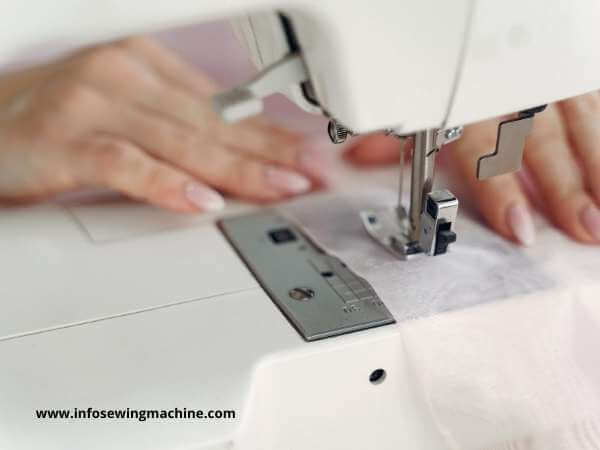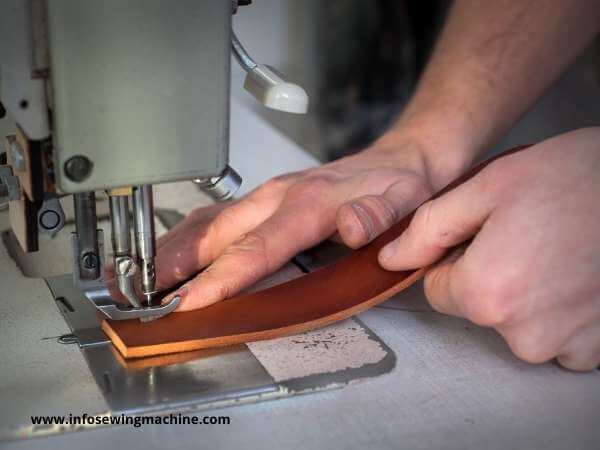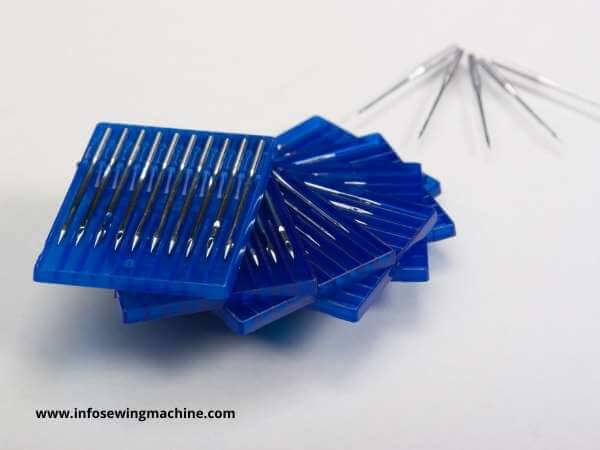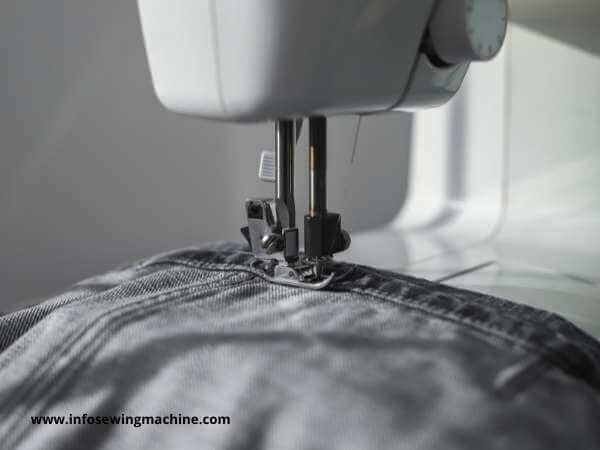11 Reasons Why Is My Sewing Machine Not Moving The Fabric – An Ultimate Guide

Whether you use your Sewing Machine for crafting, quilting, or fashion design, you may find yourself at a loss when it fails to move your fabric the way you want.
I’m sure you’ve used your sewing machine at some point in time. It’s certainly a nice tool to have around the house. But is it perfect? Probably not. Sewing machines are complex machines. You’re bound to run into problems that may not always be fixable. Some problems involve Thread Breaking, Needle Breaking, Bobbin Jamming, Skipping Stitches, Not Moving The Fabric While Sewing, etc.
In this article, we’ll cover one question Why Is My Sewing Machine Not Moving The Fabric? with its possible reasons and solutions.
Reasons For Sewing Machine Not Moving The Fabric
Many people own a sewing machine, but many don’t know how to operate it properly. If you’ve ever struggled with the problem of Fabric Not Moving During Sewing, read the following reasons to resolve the issue.
01. Stitch Length Of Sewing Machine Is Set to Zero
When sewing, you must ensure that your stitches are the right size. Otherwise, you won’t be able to get the required result on the fabric.
One of the most important things when sewing is the correct stitch length. This is a measurement between two points along the edge of your work. Stitch Length is very important to work smoothly. It is a thread jump from one point to another for the sewing process. But if the Stitch Length is set to zero, there is no space for jumping the thread from one point to another.
In this case, the machine will not make a normal stitch, and the fabric will not move while sewing. The result is a bunch of thread on the fabric, and the fabric may be damaged. Secondly, it may cause damage to the sewing machine too.
Always determine the proper stitch length according to your sewing project to avoid many problems.
02. A Knot in the Thread
Sometimes a thread having a knot, frayed or rough, causes the machine not to move the fabric. Don’t use such kind of threads as it not only damage your fabric but also can cause damage to the Sewing Machine as well. A knotted Thread can also cause the sudden Breakage of the Sewing Machine Needle.
03. Improper Threading
Threading seems to be not a complicating task. But even a slight mistake can complicate the working of the Sewing Machine. Threading A Sewing Machine is a very important technique and cannot be ignored. All Sewing Machines come with the manual where you can read about the Threading Guide. Also, you can be guided through a Threading Guide on the Sewing Machine.
04. Improper Thread Tension
If the thread tension is not properly adjusted, it may cause you to face many problems and not allow a machine to move the fabric. When the thread tension is too tight, it won’t let the needle go through the material. Therefore, it doesn’t allow the machine to move. This is easily fixed by adjusting the thread tension by turning it clockwise and anticlockwise or pressing the button.
05. Feed Dogs Are Down
One of the common problems sewing machine owners have to deal with is Feed Dogs that are down. Most of us are familiar with the phrase “the sewing machine has a mind of its own.” This happens because the feed dog is designed to move forward and pull the fabric forward. Unfortunately, the sewing machine has a mind of its own too, and if something goes wrong, it may just decide to stop moving. This is why you often need to check the feed dogs position. Adjust the position to its height for proper working with Fabric.
06. Feed Dogs Are Worn Out Or Damaged
Over the working on a machine with different materials or different kinds of fabrics. The Feed Dogs occassianly Worn out or damaged. This happens because of using you for a long time for sewing projects, and thus the Feed Dogs are old enough to change. The teeth of Feed Dog are very sensitive and can be damaged easily. So be aware to check them if the machine is not moving fabric.
07. Feed Dogs Are Jammed
If you have fabric that isn’t moving, your feed dogs might be jamming. This can happen when you’re using a machine which is not been cleaned for a long time. A Clean Sewing Machine has a strong impact on Sewing Process. Make sure to clean the rollers with a lint brush to remove any debris or dust. Feed Dogs Jamming also causes the fabric to get stuck in the teeth of feed dogs.
You should always clean the rollers after each use. Doing this will help to ensure that your feed dogs won’t get stuck again.
08. Needle Is Not Piercing The Fabric

One more reason that can cause the fabric not to move is the Needle piercing. Suppose the needle is not in contact with the presser foot. This can happen if the Needle Is Broken, Bent, or Damaged and cannot go through the holes of Feed Dog. And if the needle does not pierce the fabric, it will not be able to make stitches, and thus fabric will not move.
09. Bobbin Case Is Full of Lint
There should be a possibility if Bobbin Case is full of lint. When you start stitching, insert a Newly winded Bobbin to avoid any issues and ensure no lint, dust, or debris is stuck into the Bobbin Case.
Using an old Winded Bobbin, you should look at the bobbin case. You’ll notice that it will get filled up with lint. The best way to remove all this is to use a vacuum or Lint brush. Then, you can put the bobbin back in your sewing machine and start using it again.
When you’re ready to stitch, pull the thread out of the bobbin to make loops with the thread coming from the Sewing Machine Needle.
10. Presser Foot Is Not Down
Among other functions, Presser Foot has an important function: to hold a fabric between Feed Dog and Presser Foot for the sewing process. If the presser Foot is not down, it will not hold the fabric and causes the stuck fabric underneath the needle and stuck into the Feed Dog.
To Avoid this, ensure your presser foot is in its down position to hold the fabric for stitching.
11. Fabric Is Too Thick, or You’re Sewing Through Too Many Layers
Household Sewing Machines are not designed to tackle Thick fabrics. Unless you use a Professional Sewing Machine to deal with many layers or thick fabrics. Thick Fabric is difficult to handle. The sewing machine will not move fabric if it is thick because thickness causes the presser foot to its high position and loses its hold on the fabric (as discussed above). Which results in not moving and you can not sewing.
Conclusion | Why Is My Sewing Machine Not Moving The Fabric
When it comes to sewing machine troubles, don’t give up! While many problems can be fixed on your own, the problem is probably not that severe. To make your sewing machine move the fabric properly, you need to ensure that if there is any reason given above in the article, you can easily sort them by taking minor precautions. In another case, if it still is not working, you can take your machine to the mechanic to fix the issue.
I hope this article helps you find the solution to Why Is My Sewing Machine Not Moving The Fabric. Check more Sewing Machine Related Issues Here Troubleshooting Of Sewing Machine
FAQs | Why Is My Sewing Machine Not Moving The Fabric
Why does the fabric not feeding properly?
There are several reasons for fabric not feeding properly Damaged Needle, Zero Stitch Length, Feed Dogs Damage or Jamming, Improper Threading, etc.
Why is my feed dog not moving?
Check the Sewing Machine setting for the feed dog movement. If there is no setting on the Sewing Machine, remove the plate and clean dust, thread, lint, debris, etc
What tension should my sewing machine be on?
Tension should be between 0 to 9, or normally 4.5 is the Default Position for Normal Sewing.





